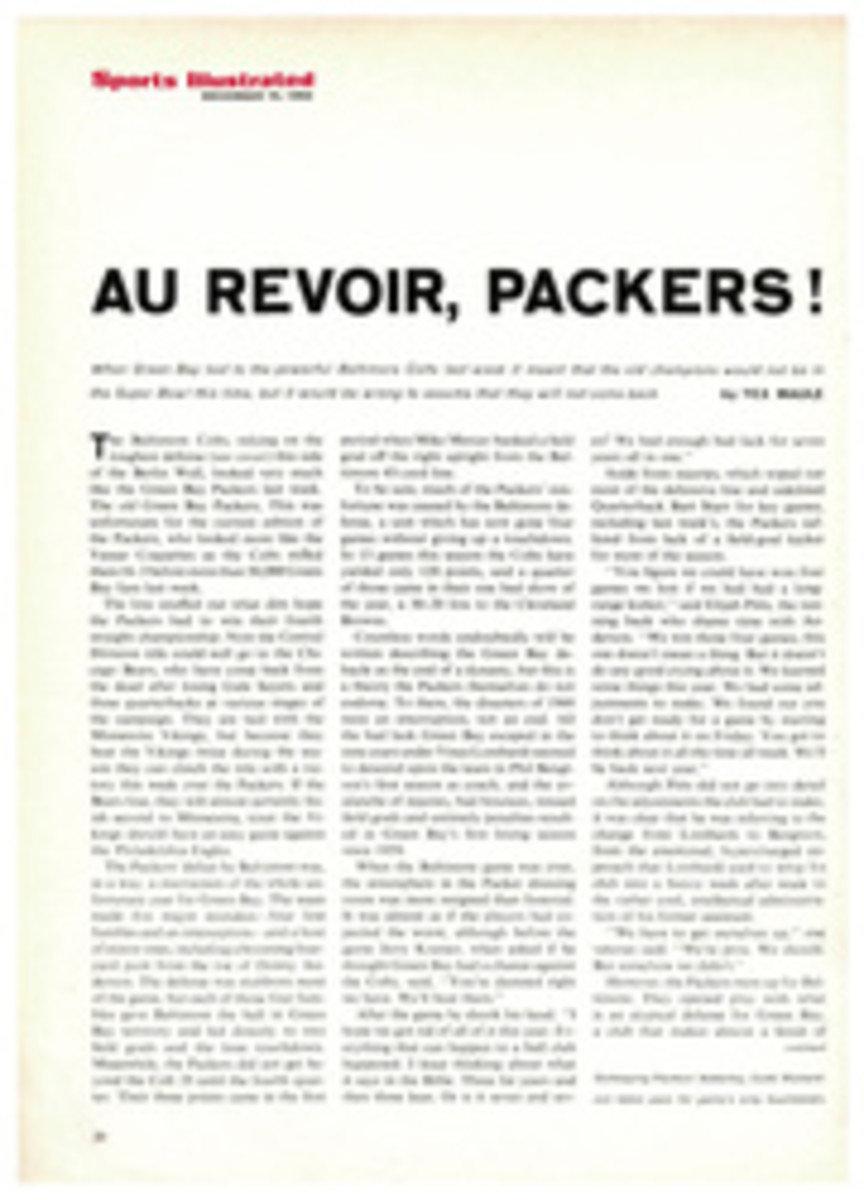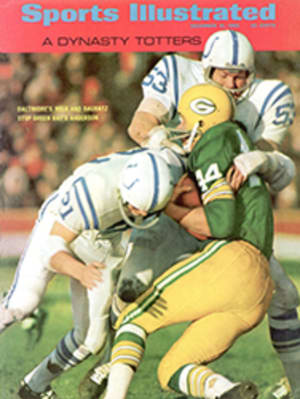
Lights go up in Hollywood
Ah, the wonders at one's fingertips. In New York City these days the housewife who feels her family is missing the snowbound country smells of the Yule season turns a dial on her artificial Christmas tree and the scent of fir wafts through her living room. In California the governor, who like all governors enjoys the smell of ever-green money, turns on the lights at the Hollywood Park harness meeting, and on Christmas morning he will find his stocking stuffed with millions. Ronald Reagan, like the housewife, has a new thing to make him merry.
Since mid-November, California has had night harness racing, and in three weeks attendance at the trotters has jumped 32.7% and the mutuel handle is up 15.8%. The change from days to nights will put an extra million in Reagan's treasury this year, perhaps as much as $7.5 million next year, and, more significantly, the popularity of night racing is expected to provide the impetus for the reestablishment of a major Standardbred industry in the West.
In the 1880s and '90s the quality of harness racing at the California fairs matched anything in the East or Midwest. Trotters bred in the state sold for as much as $125,000. Former California Governor Leland Stanford used 11,000 of the 82,000 acres he owned in the Santa Clara Valley as a stud farm. Often he had more than 100 trotters in training, and at his death in 1893 his horses held every major trotting record. In 1911 Thoroughbred and Standardbred racing were outlawed, and horse breeding began to decline sharply. The only horse earning his oats in the 1920s was Tom Mix's Tony. Racing was legalized again in 1934, but the California harness sport never regained its preeminent position. At present there are fewer Standardbreds foaled each year in the state (135) than were foaled annually on Leland Stanford's ranch. "When racing resumed," says one local harness horseman, "the Thoroughbred people took control and pushed us aside. They did not want any competition."
In 1946 Western Harness Racing, Inc. was formed to bring big-time trotting back to the West Coast, but Thoroughbred interests were powerful enough to dictate the terms. The Standardbreds were given 25 racing days annually and the harness meeting was to alternate from year to year between Santa Anita and Hollywood Park. Allied with a strong movie lobby, the Thoroughbred people were to prevent the trotters—for 21 years—from operating at night. "They knew if we were allowed to race at night we could afford to build our own racetrack," WHR General Manager Pres Jenuine says. The rental price of the flat tracks was exorbitant—50% of the trotters' profits before taxes—and Santa Anita and Hollywood Park were to approve Western Harness' annual budget. "They told us when we could race, how we could race, what we could spend and who we had to hire," Jenuine says.
The Thoroughbreds' "controlling interest" in California trotting continued until last year when the flat tracks sought additional racing dates from the state legislature. They found they could not get the necessary bill through the California house unless they made a deal with legislators representing harness racing interests. To obtain 20 more days of flat racing, the Thoroughbred tracks had to agree to night harness racing.
To bring the Standardbred sport in California out of the Dark Ages, Western Harness has invested $1.5 million in lights and strung 140 miles of wires through the track. Using only two million of its four million watts, the mile track still is better lit than 95% of U.S. raceways.
WHR now has a razzle-dazzle show with a Hollywood cast—Mickey Rooney in love beads, Vince Edwards, Connie Stevens, Walter Matthau. In the new harness crowd there are often Montreal Canadiens, taking time off from The Forum, which stands at the head of the Hollywood Park homestretch, pro football players like Lamar Lundy and Pat Studstill, pro basketball's Bill van Breda Kolff and Elgin Baylor and baseball's Bill Rigney and Jim Lefebvre. Some nights Buzzie Bavasi has a horse entered. His stable, Twilight Farms, is providing for his twilight years, he says. There are executives, housewives, clerks and laborers. The crowds, which have been averaging 12,596 and $79 in bets per person, still rattle around in the Hollywood Park grandstand, which was built to accommodate 60,000 to 70,000 people, but the attendance is growing. "They are more enthusiastic than the elderly folk who used to come in the afternoon to pass the time," one driver said.
There are some—the old people, for instance—who do not like the change. It also, understandably, upsets Jack Kent Cooke, the entrepreneur of The Forum, who sees night harness racing competing for his sports dollar. Cooke applied for an injunction to prevent Hollywood Park from operating at night. In retaliation, the track closed the parking lots it had been allowing The Forum's customers to use. The arena has space for only 3,000 cars. Cooke dropped his case and sued instead for peace and parking.
For a while the track had trouble on all sides. The Century drive-in movie, which stands at the other end of the homestretch, complained that the strong lights in use at the track were making it difficult for its customers to see. "It's a joke," Pres Jenuine declared. "Very few people there look at the picture." But he built a $15,000 fence to placate the theater owner.
Next, a lady whose home is located across the track protested that the lights were blinding her tenants. The same lady three years before had persuaded Hollywood Park to cut down a number of trees on the backstretch so that her boarders would have a better view of the lakes and flowers in the infield. There is also a suit pending in Los Angeles Superior Court, two Inglewood families charging that the City of Inglewood did not hold proper zoning hearings before approving night racing. Racetrack lawyers say that the plaintiffs are actually fronting for a group of the state's Thoroughbred owners.
Just when the track thought it had its problems solved, or at least shelved, a roiling night fog began to bedevil the meeting. One evening two weeks ago the crowd had to be sent home after the sixth race. "Aw, let us stay. We'll bet," fans shouted, though no one in the stand could see the finish line. Last Friday, the night of the $75,000 American Classic Trot, fog moved in again. Patrol judges stationed around the track tried to call the third race for the crowd as the field passed their vantage points. When the horses moved into the final turn the judge at the 5/16ths pole reported, "I can hear them but I can't see them." Some of the crowd of 11,794 saw the mare that finished first enter the winner's circle but no one saw her leave as fog smothered the track. The rest of the card, including the Classic, was canceled.
On Saturday fog shut Hollywood Park for the third time. A track official muttered, "Maybe we should have hired the guy who came to us after the first fog. He claimed he could call in winds to blow fog away. He said in 1941 he called winds up from Dallas to Winnipeg and sent them east to Moscow to freeze out Hitler. I asked him how he called the winds, and he told me it was the same way you call elephants—with your fingertips."
Perhaps turning off the fog is no more extraordinary than turning on the scent of your Christmas tree.
PHOTO
MUGGING Mickey Rooney, one of the new evening experts, tries to follow his choice.

